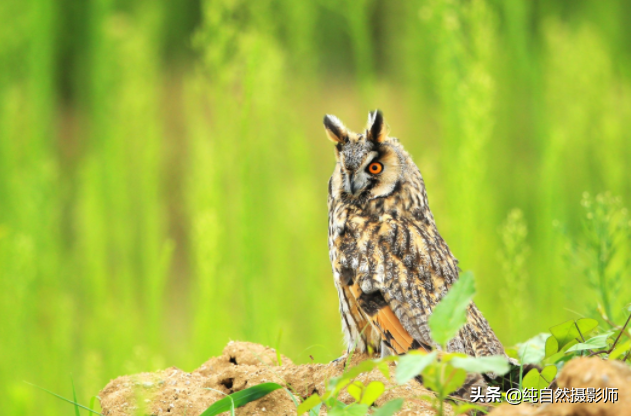The long-eared owl (scientific name: Asio otus) has long ear feathers that are located on either side of the top of the head and are erect as straight as the ears. The dough plate is prominent, brownish yellow, wrinkled intact, white and embellished with a blackish brown.

Medium-sized bird, 33–40 cm long. The dough plate is prominent, the middle of the dish is white with black brown, the sides of the dough are brownish yellow with dry white feathers, the feathers are loose, and the forehead is white and brown. The inner and upper and lower margins of the eye have dark spots. The crumpled collar is white with black-brown feathers, the ear feathers are well developed, about 50 mm long, located on both sides of the head, prominently protruding from the head, like two ears, black-brown, brown on both sides of the base of the feather, and a brownish-white spot on the edge of the inner edge.
Except for a few areas such as Xining in Qinghai, Kashgar and Tianshan in Xinjiang, The Long-eared Owl in China is a migratory bird in most other areas, including summer migratory birds in Heilongjiang, Jilin, Liaoning, eastern Inner Mongolia, northeast Hebei and other places, and from Hebei and Beijing to the south, until Tibet, Guangdong, and the southeast coastal provinces are winter migratory birds.
The breeding season is from April to June, when the song is particularly liked. Because most of them show off at night, the way is relatively simple, so you can only do some close-up performances, such as bowing, flapping your wings, kissing each other, sorting out feathers, etc., and sometimes drumming your wings, making a strange crackling sound in your mouth, and changing your feet in turn. Nests are found in forests, usually using old nests of crows, magpies or other birds of prey, and sometimes in tree holes. 3-8 eggs are laid per clutch, usually 4-6. The eggs are white, the eggs are ovate, the size is 39-45 mm× 32-35 mm, the average is 43 mm× 33 mm, and the weight is 19.6 g. The incubation process is entirely undertaken by the female and the incubation period is 27-28 days. Its chicks are late-blooming and leave the nest after 45-50 days of hatching.